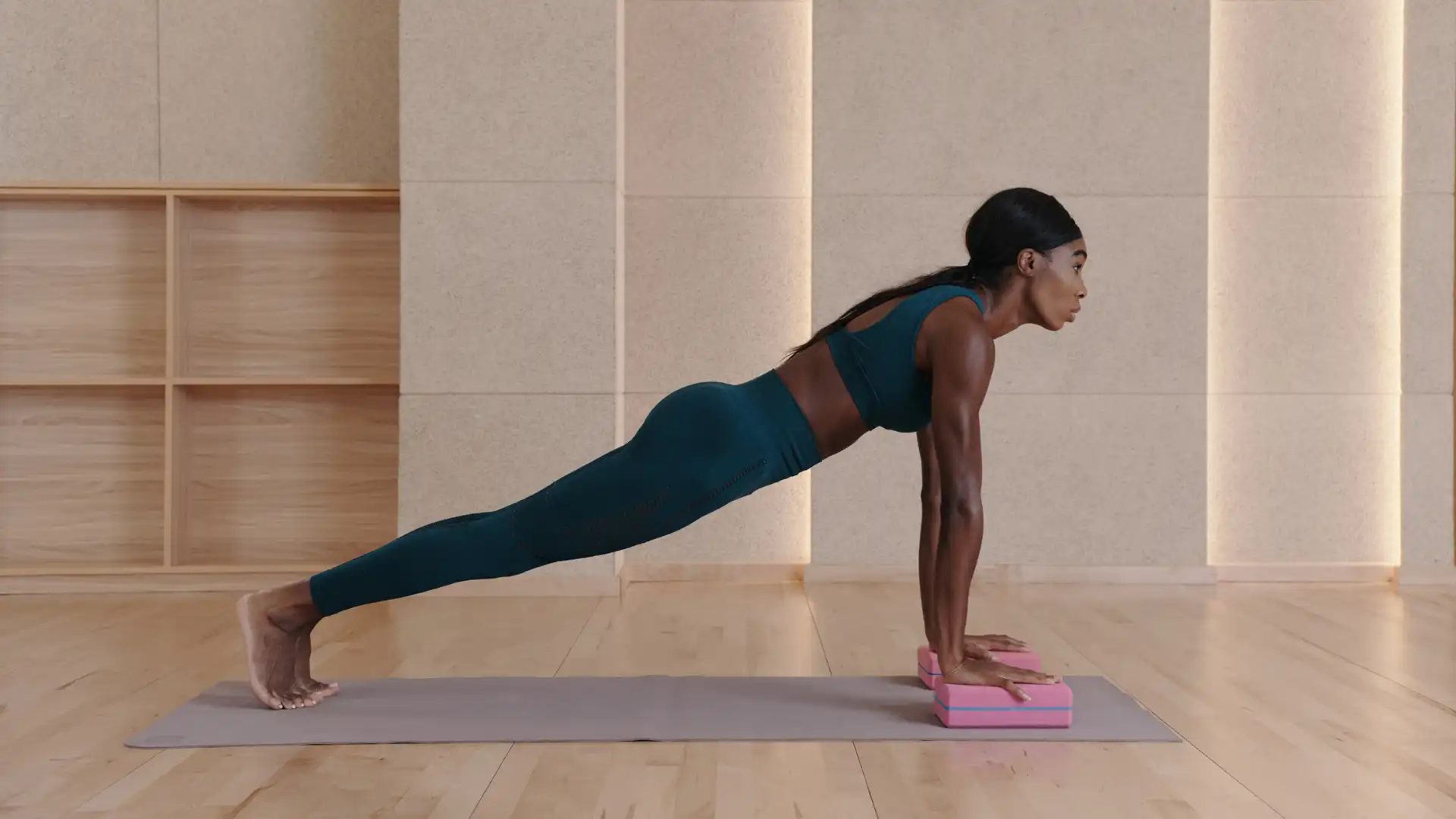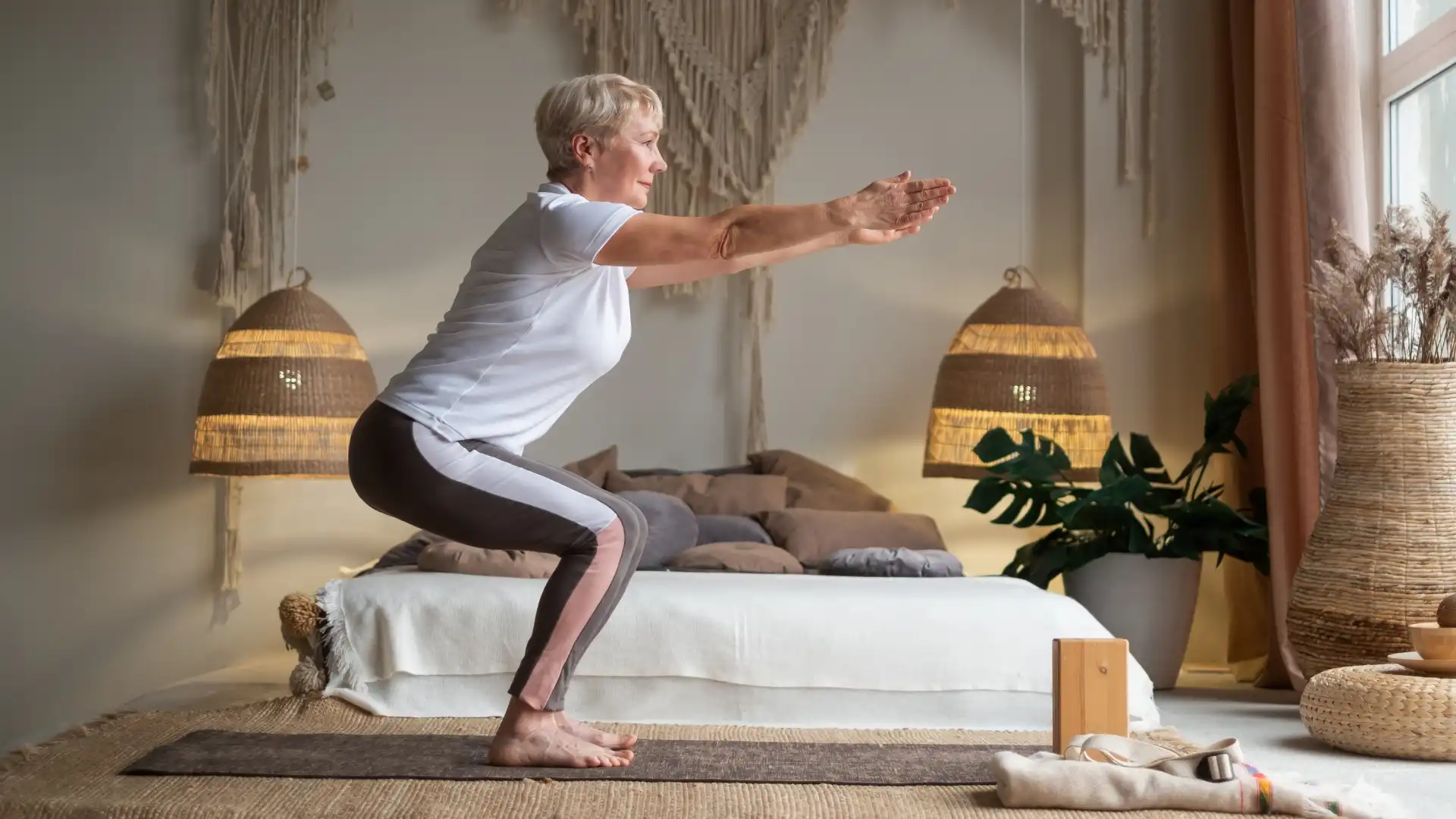Healthy Practice: 9 Tips for Staying Safe in Yoga Class

No one can completely guarantee you’ll never hurt yourself while doing yoga. After all, no physical activity is risk-free. You could hurt yourself walking your dog, taking care of your garden, or even just sitting at your desk. But there are some common-sense approaches you can take that will greatly reduce your chances of injuring yourself. And, as you’ll see when you read through these guidelines, taking these approaches will also enable you to practice your yoga poses mindfully—paying attention to pain levels, breath, energy levels, and motivations for doing poses or not doing them—which is one of the aims of the asana practice.
How to Maintain a Healthy Yoga Practice
I put together these nine guidelines a few years ago by consulting with a physical therapist, Shari Ser, and a medical doctor, Baxter Bell, both of whom are long-time teachers of yoga.
- Inform Your Teacher: If you’re taking a class, tell your teacher about any injuries, illness, conditions, or problems that might affect your ability to do certain poses or put you at risk. This enables your teacher to help you figure out what you should not be doing and give you alternatives, or at least understand why you’re choosing to do something different at times.
- Pay Attention to Pain: Learn to tell the difference between sensations that are potentially good for you, such as the healthy stretch of a tight muscle, and those that are potentially injurious to you, such as over-stretching a tendon or ligament, or compressing structures to the point of injury. And keep in mind that the closer pain is to a joint, the greater the potential there is for a problem. If you catch yourself moving into a sensation that feels dangerous or that you are concerned about in any way, try backing out a bit, perhaps by letting go of a stretch or by using a prop. If you can’t back out for some reason, come out of the pose and rest (see below).
- Listen to Your Breath: Although your breath may come more quickly in demanding poses such as backbends or long-held standing poses, gasping for breath indicates you’re over-stressing yourself. So see if you can back out of the pose a bit, possibly by using a prop. If you can’t back out for some reason or if doing that doesn’t help you catch your breath, come out of the pose and rest (see below). Also, as you practice, notice if you are holding your breath. Breath-holding is a possible sign you are becoming a bit fearful or anxious or reacting to pain. If you realize you are reacting to pain, back out of the pose until the pain is gone or, if the pain stays, come out of the pose altogether. However, if you realize that you are just holding your breath, try to consciously relax your breathing.

- Rest If You Need To: If you feel you’ve reached your time limit in a pose, no matter what the rest of the class is doing, come out and take a rest. Likewise, if you are suddenly sweating much more than normal, this may also be a sign that you’re over-stressing yourself, and you should take the same precautions. Some suggested ways to rest include:
- If you’re doing supine poses (on your back), rest in Relaxation Pose (Savasana).
- If you’re doing prone poses (on your belly), rest in Crocodile Pose (Makarasana).
- If you’re doing seated poses on the floor, rest in Easy Sitting Pose (Sukhasana), where you sit with crossed legs, or in Thunderbolt Pose (Vajrasana), where you sit on your heels. Sit with your pelvis on a yoga block or folded blanket if that is more compatible with your knees.
- If you’re seated on a chair, come into seated Mountain Pose (Tadasana).
- If you’re doing standing poses, rest in Mountain Pose.
- If you are doing inverted poses, come down into Child’s Pose (Balasana).
- If you feel like you just can’t finish the rest of a class, either let the teacher know, so they can give you a resting pose to finish with, or just lie down in a comfortable Relaxation Pose (Savasana). Don’t just leave in the middle of practice without cooling down.
5. Stay Balanced: If you are weak or have trouble with balance, use props, such as a chair or the wall, to stabilize yourself so you don’t fall over and can practice with confidence. You can practice with your back to a wall, with one foot against the wall in standing poses, or with a hand on the wall in certain poses. If you know you have problems with balance, come to class early and stake out a place next to the wall so the wall will always be there when you need it.

6. Use Props: Even if you have not been specially instructed to use a prop if you know that it is important for your safety (to keep you from overstretching or falling, or to use as padding for sensitive areas), go ahead and use it. And if you know you typically need a certain prop, such as a block or blanket, have one ready at your side before class starts.
7. Resist Peer Pressure: If your class is doing a pose that you feel is beyond your capabilities or that you just aren’t ready for, just don’t do it. Ask your teacher for an alternative or take a resting pose. Or, you can just watch the others do the pose, and learn through observation. If your class is consistently too challenging for you, look for another class that fits your level of ability, such as an eight-week introductory series for beginners or an Accessible Yoga class, a class that is designed specifically for older students, or even just a class in a different style of yoga.
8. Only Do Inverted Poses if They’re Okay for You: Inverted poses are contraindicated for people who have uncontrolled high blood pressure, for those who are having eye problems, such as glaucoma or detached retina, and for other conditions. And if you are having neck problems, refrain from Headstand Pose (Sirsasana), Shoulderstand Pose (Sarvangasana), and Plow Pose (Halasana), please. If you have no contraindications and want to learn inversions, start by finding a special class, series, or workshop that is designed to introduce you, step by step, to the inverted poses. That way you can learn to practice these poses safely, under the careful guidance of an experienced teacher.
9. Talk to Your Doctor and/or Physical Therapist: If you have had surgery or if you have a medical condition or an injury before you return to your yoga class or home practice, explicitly ask your doctor or physical therapist which physical actions are safe for you and which are not. Don’t wait for a medical professional to tell you! Some medical professionals don’t really know what a yoga class is like, even while they recommend “yoga.” Some imagine it’s just a gentle stretching session and might not even consider that you could be going upside down, twisting yourself like a pretzel, or sweating from a vigorous practice. So when you are checking in about whether you’re ready to practice yoga yet, consider bringing a yoga book with you so you can show the doctor or physical therapist the types of poses you normally do. You should also ask some specific questions, such as:
- Can I go upside down for long holds or even short ones?
- Can I twist my spine or round my spine forward, backward, or side to side?
- Can I cross my legs?
- Can I put pressure on this or that part of my body, such as my knees or wrists?
- Can I stand on one leg?
- Can I practice in bare feet?
- Is my recovery from a serious illness, such as cancer, at a place where I can safely increase my physical activity?
- Is it safe for me to do a vigorous practice that makes me sweat and exert myself? Is it okay for me to hold standing poses that require endurance and strength for long periods of time?
- Is it all right to stretch an injured tendon, ligament, or muscle now?
- Would any of the medicine I am taking interfere with my practicing by making me dizzy, unfocused, distracted, off-balance, or sleepy?
- How long should I wait before returning to class or home practice? After surgery, how long do I wait before it is safe to stretch the area where my incision or scar is? If I have had a joint replacement or repair, such as a hip or knee, is there a limit to my range of motion in certain directions that I should honor?
It’s your one and only precious body, so it makes sense to be cautious and follow the recommendations you receive.
Also, read...
Teaching Svadhyaya: 3 Ways to Encourage Self-Study in Yoga
In Celebration of Gray-Haired Yoga – Busting the Myth of the Yoga Body
Related courses

Nina Zolotow, RYT 500, the author of the forthcoming book “Yoga for Times of Change” and the Editor-in-Chief of the Yoga for Healthy Aging blog, is both a yoga writer and a yoga teacher. She trained to be a yoga teacher at The Yoga Room in Berkeley, California, has studied yoga therapy with Shari Ser and Bonnie Maeda, and is especially influenced by the teachings of Donald Moyer. She also studied extensively with Rodney Yee and is inspired by the teachings of Patricia Walden on yoga for emotional healing. Her special area of expertise is yoga for emotional well-being (including yoga for stress, insomnia, depression, and anxiety). She teaches workshops and series classes on yoga for emotional well-being, stress management, better sleep, home practice, and cultivating equanimity.
Nina is the co-author with Baxter Bell of Yoga for Healthy Aging: A Guide to Lifelong Well-Being and co-author with Rodney Yee of Yoga: The Poetry of the Body (with its companion 50 Card Practice Deck) and Moving Toward Balance. She is also the author of numerous articles on yoga and alternative medicine.



